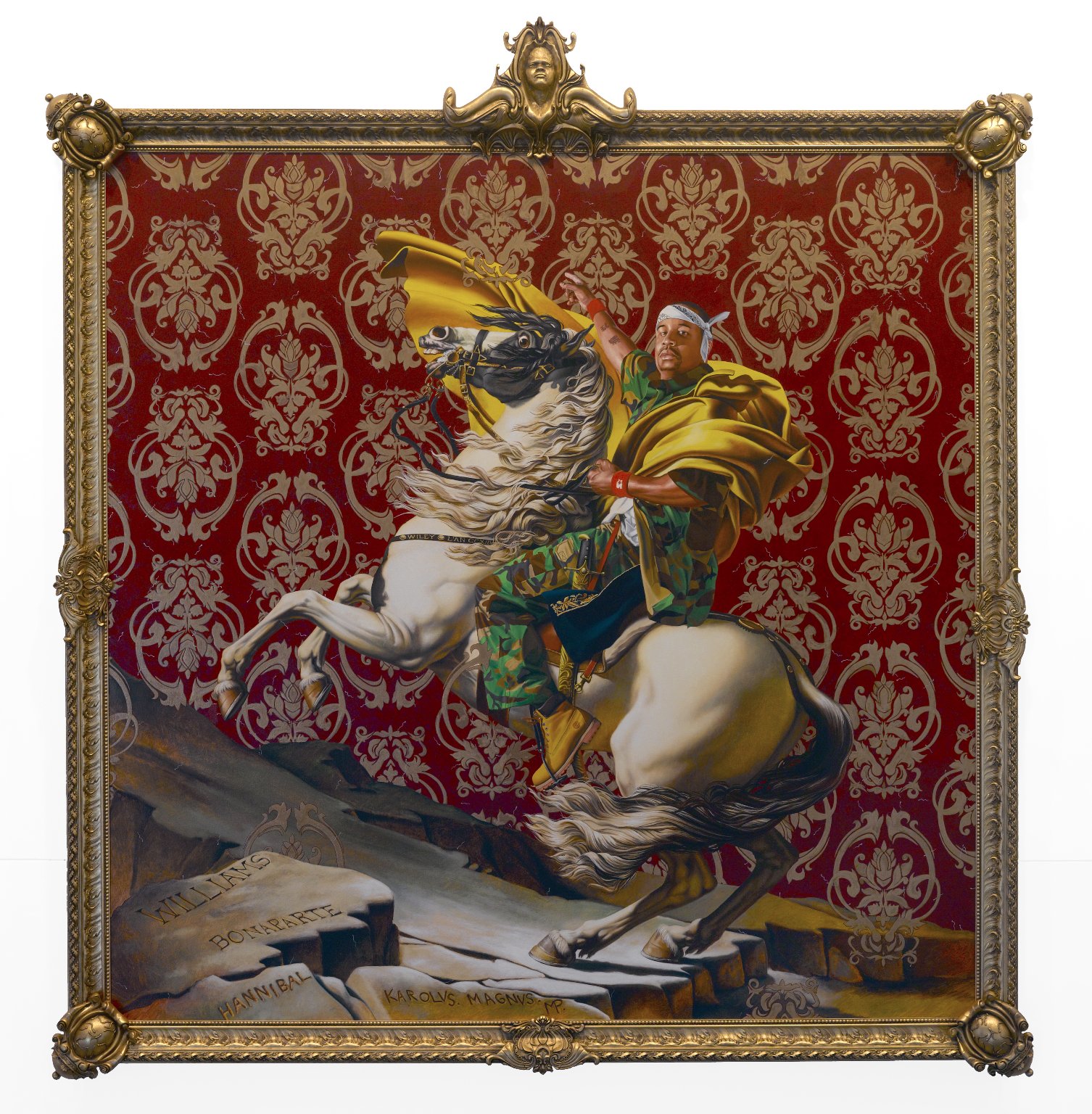A young black man was painted in naturalistic, vividly colored portraits set against floral-patterned backdrops. This is Kehinde Wiley’s work. Wiley is an American portrait painter who is based in New York City and is well-known for his very realistic depictions of black people that frequently draw inspiration from Old Master paintings.
Wiley explores the themes of race, gender, and sexuality in his work. His colorful pictures challenge masculinity and bring young men and people of color into the galleries and institutions they are underrepresented in.
Being African-American, poor, and queer put Wiley in a challenging position at the beginning of his career. However, because of his experiences related to gender and identity, he developed into a renowned artist who is passionate about portraying other marginalized people in an empowering manner. He was also requested to paint the official portrait of American President Barack Obama, which is probably his greatest honor.

Napoleon Leading the Army over the Alps, 2005, is a spin-off of Jacques-Louis David’s painting of 1801. Instead of Napoleon Bonaparte, Wiley replaces the subject with an anonymous black man. Wiley’s subject is dressed in contemporary clothing representing hip-hop culture. The outfit this young man is wearing is a combination of a white bandana, a military-like uniform, red wrist bands, a work boot, and a golden robe. The subject poses on his white riding horse like Jacques-Louis David’s Napoleon. Behind him, a beautiful decorative pattern is set as a background.
This painting challenges the ideas of masculinity and white supremacy. The subject’s conquering pose represents man’s dominance over nature and, by extension, over women. A young black man is obviously turning away from white superiority in society. This painting somehow also reminds us of contemporary violence as experienced in urban America. A decorative organic line background gives a more balanced and feminine atmosphere.
A black woman’s portrait painting appears in Shantavia Beale II, 2012. She is in an elegant pose, surrounded by a floral pattern of green leaves and flowers. Her gaze glances over the viewer. This painting portrays an underrepresented subject, a black woman, in her charisma and power. She neutralizes toxic masculinity with her characters. Being surrounded by organic life conveys both sensitivity and strength.
Kehinde Wiley’s works belong to identity art. At this point, the everyday world is dominated by white, male, and heteronormative experiences, including the art market and curatorial establishment. Identity art can be understood as an effort to redress this imbalance. It promotes reflection on the ways that art historical practices have consistently disadvantaged people whose works did not meet these standards or speak to related issues.
The identity art movement also highlights identity as socially constructed rather than inherent and unchangeable. Identity is dynamic than static. Furthermore, there is no such thing as a pure identity—instead, there is always an intersection and blending of various identities.
Wiley’s portrait painting of everyday men and women replaces the European nobles depicted in classical paintings and calls attention to the exclusion of African Americans from historical and cultural narratives.

